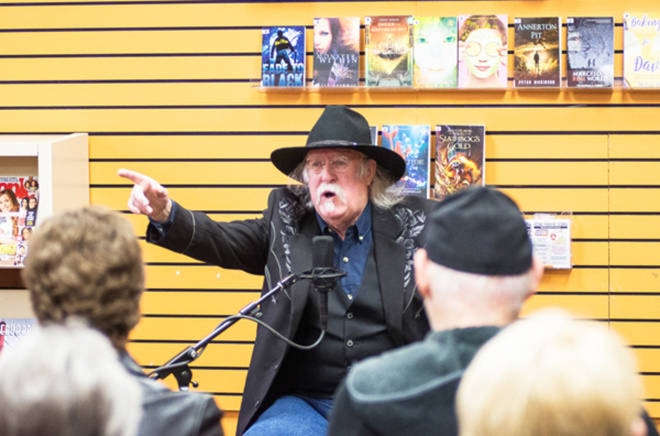When I received a phone call from one of Ralph Kernaghan’s daughters asking me if I would be interested in having her late father’s fly-tying materials, I responded with a very quick “yes.”
I then said that not only would I be honoured, I assured her it would be put to good use as I will be spending a part of this summer teaching kids how to tie flies at a number of schools and summer camps. She responded by saying he would have approved.
What I ended up receiving was a plastic storage unit on casters about four feet high with six slide-out drawers full of feathers and fur, spools of tinsel and yarn, and just about everything else under the sun that could be used to tie a fly.
Ralph had a reputation for being practical and this became more than apparent as I went through the drawers of materials. I could not help but smile as I looked at a clump of reddish-brown feathers. They were still attached to a piece of the handle of a feather duster that he must have borrowed from his wife and forgotten to give back. There was also a whole whack of pieces of deer fur that I am sure were from animals that he had hunted in order to put meat on the table. Not to mention all sorts of spools of yarn that matched the colours of some of his own socks and sweaters as well as those of his children. And while there were several quality capes of hackle feathers, there were far more duck and pheasant feathers from birds that had been served for Sunday suppers. In amongst the tying materials were a number of home-made tying tools and a couple of old toothbrushes that had been used as dubbing brushes. A pencil with a sewing machine needle taped to it with electrical tape had obviously been used to clear head cement from the eyes of his finished flies. Why buy something when you can use what you already have?
Ralph’s daughter told me how he had spent many an hour tying flies that were capable of fooling even the most wary of trout. I can still hear the pride in her voice as she told me how his flies had commanded the respect and admiration of his fellow fly fishers, how he had found a special satisfaction in catching fish on patterns he had tied himself, and how he had found an even greater satisfaction when others did.
I opened another one of the drawers and found a small wooden box. It contained number of flies that could only be described as exquisite. Each one, so meticulously tied, had been perfected over the course of a lifetime spent fishing countless lakes and rivers and streams. It was obvious at a glance that Ralph had mostly been a dry fly fisherman. Dry fly fishing is different somehow. It is more delicate, more precise. As I looked at his patterns I could almost sense his anticipation as he presented one of his perfectly tied #16 Tent-wing Caddis patterns to a trout holding in the shadows of an overhanging branch.
As I stood there looking at his hand-tied flies, I began to get a sense of who this man had been and what his time on the waters must have meant to him. I also realized from the condition of the flies in the wooden box that he must have continued to tie flies even after his long legs could no longer carry him to his favourite streams. Flies he knew he would never cast.
Each fly, as it was tied, however, must certainly have carried him back to runs and riffles and memories of lakes and streams long ago.
As I looked down at the flies in the box, I could imagine him standing there, casting his line. I could feel the warmth of a long ago summer afternoon’s sun on his face. I could feel the tug on the end of his line. I held my breath and in my mind I set the hook and held on as the reel screamed off line and a bright shiny silver, three-and-a-half pound rainbow broke surface, tail-danced trying to break free and then took off for open waters.
I don’t think I will ever use those flies in that small wooden box. I think I’ll just hang onto them and admire them every now and then.
